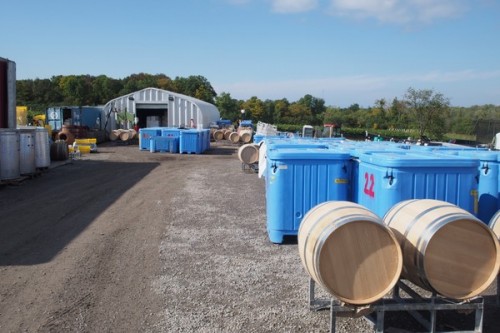
Over the course of four days of vintage, I was exposed to a number of the stages of making wine. I spent the second evening at the sorting table. Pinot Noir was coming in from two different vineyards, and our job was to work on the vibrating table which the grapes pass along on their way to the crusher/destemmer. The grapes are brought to the sorting table in the same one-ton plastic bins used for fermenting, which are then lifted up by forklift. They are gently dumped on the vibrating table, which passes the grapes along at a speed at which it’s possible to sort them.
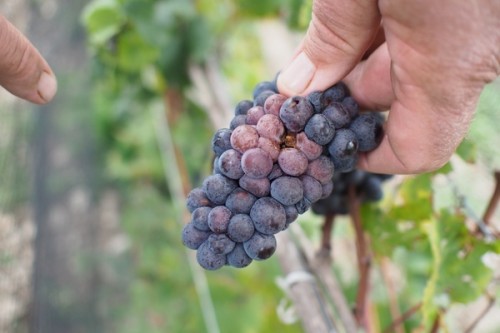
In sorting this fruit we were looking to eliminate underripe fruit and rotten fruit. There are two main rotten characters we were looking out for. The first was sour rot, which is very distinctive: the berries are an orange/yellow colour and smell very acetic and unpleasant (if you suspect this, a quick sniff will confirm the diagnosis). The second is botrytis, which turns the berries mouldy. You really don’t want either in your ferment.
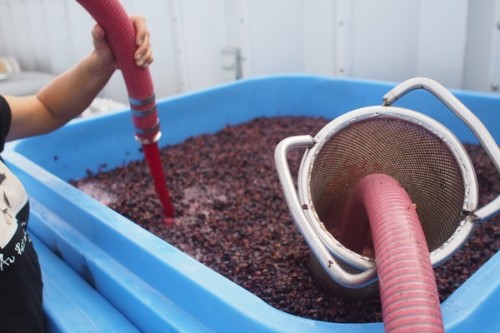
Fruit doesn’t have to be absolutely perfect. Some very high end wineries use expensive optical sorters to try to make sure that only perfect berries go into the ferment. But it’s not clear that these ‘perfect’ berries make better wine, although theoretically they should. Also, if picking decisions are made for the right reasons (and the decision of when to pick is a crucial decision), then it’s possible that a lot of fruit could be arriving all at the same time. And that fruit needs to be processed quickly. So a sorting process that is too slow could be a bottleneck that actually ends up costing quality.
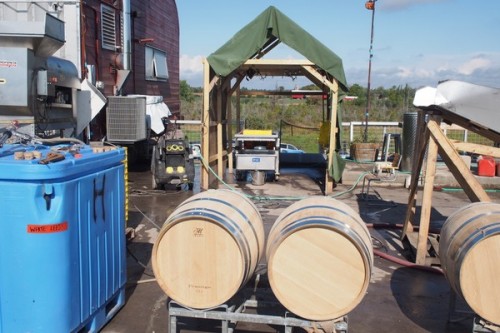
Like many winemaking tasks, working on the sorting table is very satisfying (especially for the first hour or so), but if you were to spend two days doing it without a break you might go mad. Ideally, during vintage the team shifts around tasks so they don’t get bored. Winemaking is quite physical. Certainly, at the scale that Norman Hardie is operating at, you are close to the wine all the way through the process.
Here, the Pinot Noir is destemmed and crushed before fermentation. Norm is from South Africa, and he did a vintage with Bouchard Finlayson. Peter Finlayson likes to work with whole berries, which involves using the destemmer but not the crusher. On one of their Pinot Noir lots someone forgot to turn the crusher off and Peter was furious, blaming Norm for it. But several years later, in a vertical tasting of the Pinots at which both Norm and Peter were present, the wine of the night was the one made from crushed fruit. So, unlike many others, Norm likes to crush his Pinot a bit. He destems pretty much everything, although he is doing some experiments with whole bunch where he layers crushed fruit, whole bunch, crushed fruit, whole bunch in a lasagne-like arrangement.
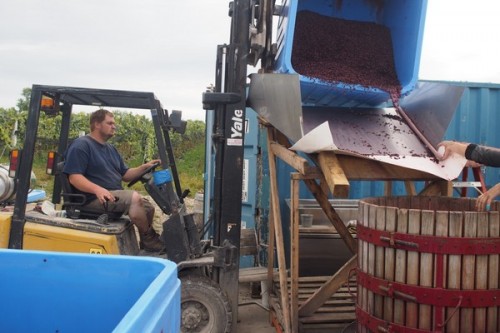
Another very satisfying process is pressing. I showed a video of the pressing process in a recent blog post. To recap: the fermentation has finished in the one ton bins, and it’s time to get the Pinot Noir to barrel. The juice is drained off using a hose that’s placed within a grill, preventing the grape skins and seeds from being sucked up. This juice goes to another bin, leaving a wet mass of skins, seeds and juice.
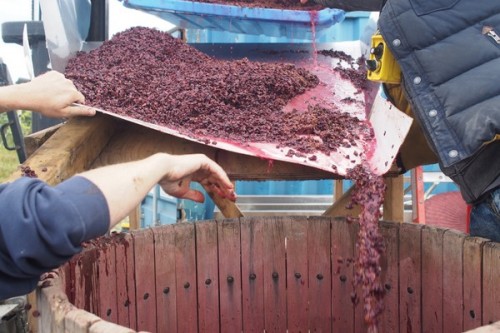
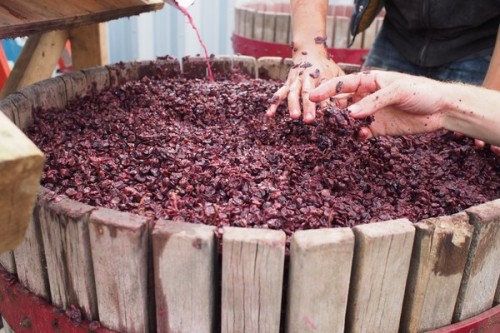
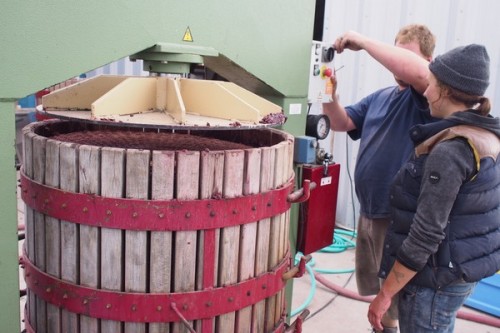
These are tipped into a basket, and this is then wheeled under a press (the whole thing is known as a basket press): conveniently the skins from one bin fit exactly into one basket. For the next 10 minutes these skins are squeezed so the juice comes out, which is then pumped into the bin containing the already drained off juice. The pressing process is stopped when the juice coming out of the skins begins to look murky. This leaves a cake of semi-dry skins once the basket is removed.

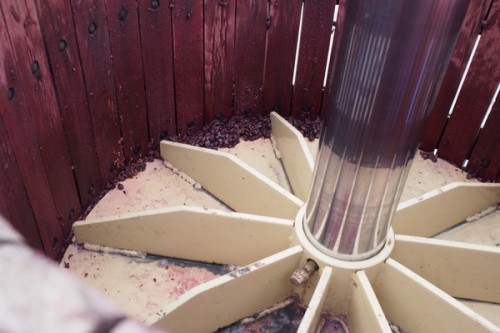
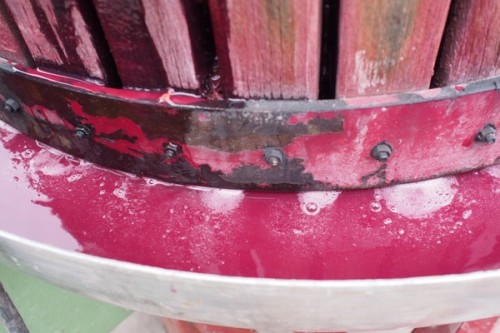
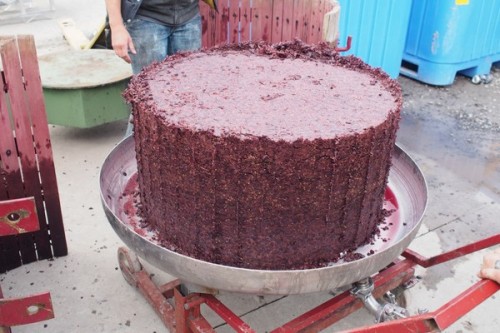
After pressing, the juice is settled overnight in the bin, and is then taken to barrel. It will stay in this barrel for the next 10 months or so. Once the Pinot is in barrel, most of the hard work is over. Then it’s a question of monitoring things and topping up the barrel from time to time.
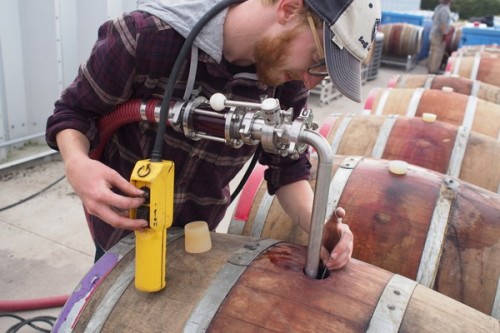
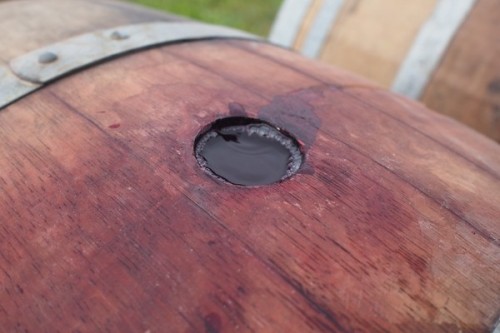
1 Comment on Vintage at Norman Hardie (3)
Very interesting photos! Do you have any videos of the whole process? It will make a great wine lesson!